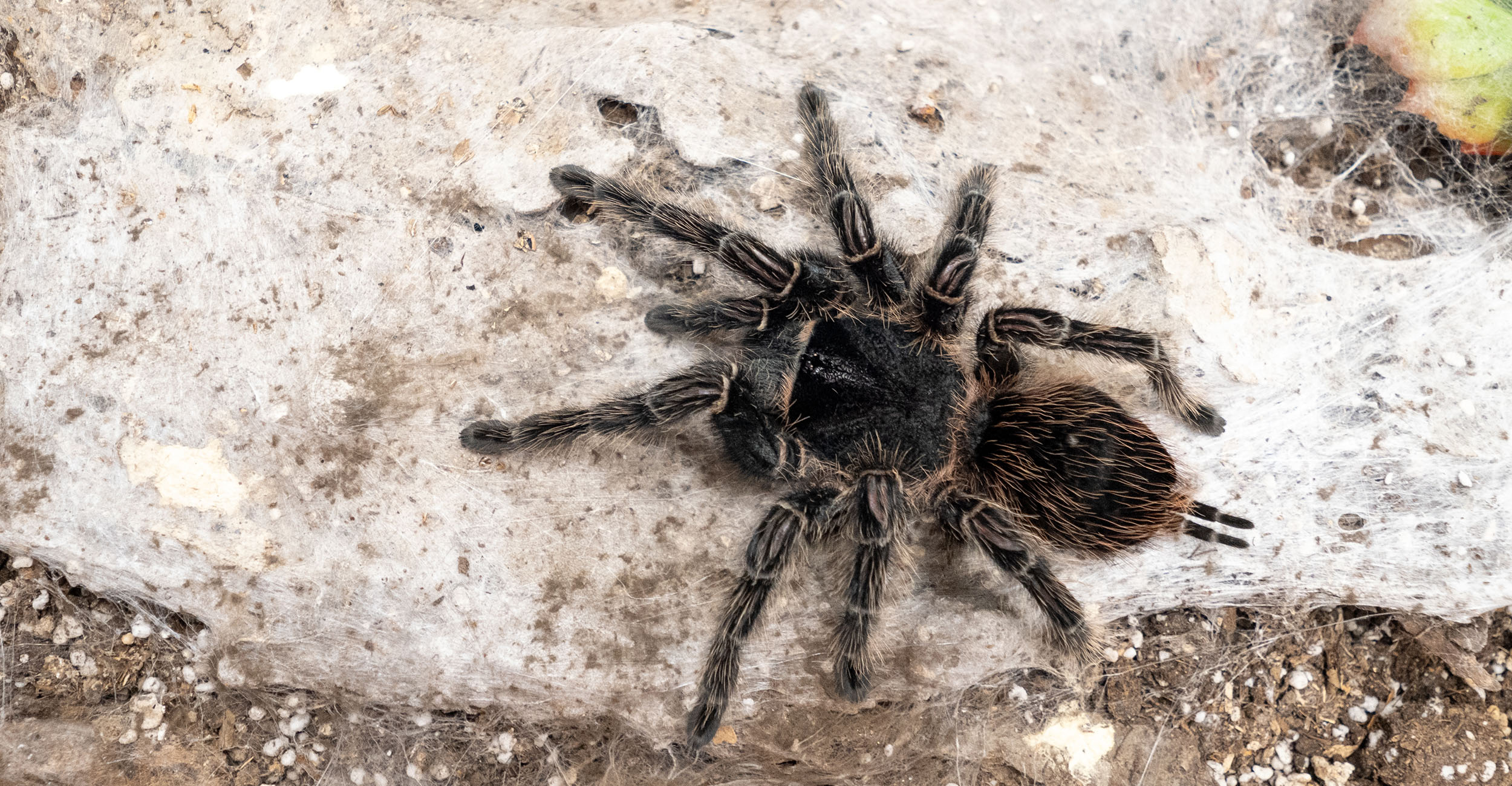
Male tarantulas on the prowl this fall season
Monday, September 18, 2023
Media Contact: Trisha Gedon | Sr. Communications Specialist | 405-744-3625 | trisha.gedon@okstate.edu
It may look like a scene from the 1990 movie “Arachnophobia,” but in reality, the increased number of tarantula sightings simply means it’s mating season.
When large numbers of tarantulas are seen, especially when a cluster is crossing the road, people often believe they are migrating, said Andrine Shufran, Oklahoma State University Extension specialist and director of OSU’s Insect Adventure.
“The truth is male tarantulas are moving around this time of year in the quest for a mate. Mating season is determined by temperature and microclimates,” Shufran said. “It can be earlier or later because the males are waiting on the right situation and cues to get on the move, but typically mating season is from late August through October.”
Male tarantulas mate after their final molt into full adulthood and typically live only a few months afterward. Although the male’s mating time is limited, it could mate more than 100 times with more than 100 female tarantulas.
During mating season, female tarantulas remain close to their burrows. They emit pheromones to attract a mate, and much like swiping left or right on a dating app, when a male tarantula approaches, the female will decide whether or not to accept him.
“Females lay between 300 and 350 eggs that are encased in an egg sack she creates in her burrow,” Shufran said. “Eggs take up to three months to emerge, but the survival rate for spiderlings to adulthood is pretty low due to predation and environmental factors.”
In Oklahoma, tarantulas have a leg span of 6 inches at most, compared to some tropical species that are the size of a dinner plate. Despite their scary appearance, tarantulas are not dangerous. Shufran said more people are killed by Christmas trees than spiders every year.
“Tarantulas do have the capacity to bite if they feel threatened, but they’re most likely to run away,” she said. “When there’s no other alternative, they’ll face off by standing on their back four legs and showing their fangs. This is typically when the spider and the human part ways and no one gets hurt. However, tarantulas will bite as a last resort.”
Although their venom is toxic to small animals like rats, it’s not necessarily harmful to humans. Shufran said a human may find the bite painful, but there’s no need to call poison control or go to the emergency room. The wound can be treated with ice.
Tarantulas also use urticating hairs found on the end of their abdomen as a defense mechanism. When this special set of hairs is released and comes into contact with skin, it can cause animals and humans to itch in the affected area.
“When they become disturbed, they release those urticating hairs by rubbing their back two legs across the hairs to create a sort of forcefield,” Shufran said. “The hairs are carried by air movement and are incredibly itchy to people and animals. It’s easy to see the stress level of a tarantula by how bare that urticating patch is.”
The Insect Adventure at OSU has been home to more than 1,000 tarantulas over the years, and anyone wanting to learn more about tarantulas and other insects is welcome to plan a visit.
Interesting facts about tarantulas:
- They can go more than a year without feeding due to very low metabolism.
- Despite having eight eyes that appear as a single spot on the top of its head, tarantulas have poor eyesight.
- Females lay between 300 and 350 eggs during the mating season.
- There is only one species of tarantula in Oklahoma – the Oklahoma brown tarantula.
- Tarantulas spin silk just like all other spiders.
- There are about 1,200 named species of tarantulas worldwide, compared to 400,000 named species of beetles.
- Tarantulas are good predators and eat aphids and caterpillars.
- Female tarantulas can live up to 40 years.
